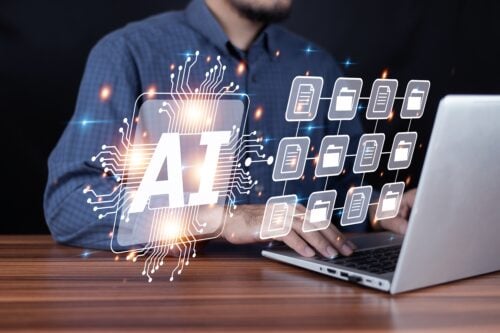How AI and Cybersecurity Changes Will Transform Your Security Program
 In today’s rapidly evolving technological landscape, artificial intelligence (AI) is no longer a distant concept but a central force reshaping industries across the globe. Among these industries, cybersecurity stands out as one of the most profoundly impacted by AI’s rise. The intersection of AI and cybersecurity presents both opportunities and significant challenges, and understanding this relationship is crucial for organizations aiming to protect their digital assets. This article explores how AI is revolutionizing cybersecurity programs, highlights the benefits and risks it brings, and offers practical recommendations for cybersecurity professionals.
In today’s rapidly evolving technological landscape, artificial intelligence (AI) is no longer a distant concept but a central force reshaping industries across the globe. Among these industries, cybersecurity stands out as one of the most profoundly impacted by AI’s rise. The intersection of AI and cybersecurity presents both opportunities and significant challenges, and understanding this relationship is crucial for organizations aiming to protect their digital assets. This article explores how AI is revolutionizing cybersecurity programs, highlights the benefits and risks it brings, and offers practical recommendations for cybersecurity professionals.
The Benefits of AI in Cybersecurity
AI is increasingly being integrated into cybersecurity programs due to its ability to process vast amounts of data, identify patterns, and automate responses to threats. The use of AI in cybersecurity has been particularly beneficial in enhancing threat detection and response times. According to IBM’s 2024 “Cost of a Data Breach Report,” organizations that extensively used AI and automation saved an average of $1.88 million in data breach costs and identified and contained breaches 100 days faster than those that did not use AI. This capability allows organizations to respond to threats more swiftly and effectively, reducing the potential damage.
How AI Increases Security Risks
While AI offers numerous benefits, it also introduces new security risks that organizations must address. These risks include:
- Accidental Data Leaks: AI systems often require large datasets for training, which can include sensitive information. If these datasets are not adequately protected, they can be vulnerable to breaches, leading to the exposure of confidential data.
- AI-Generated Phishing: Cybercriminals are using AI to create highly sophisticated phishing emails that are harder to detect. These emails can mimic legitimate communication with high accuracy, increasing the likelihood that unsuspecting recipients will fall victim to scams. Watch LMG’s recent webinar, “How the Dark Web Works,” to see AI phishing tools in action.
- Voice Cloning and Deepfakes: AI-driven technologies can create highly convincing audio and video content, which can be used to impersonate individuals or manipulate public opinion. For instance, a deepfake video could deceive employees into transferring funds to a fraudulent account, believing they are following legitimate instructions from a senior executive.
In early 2024, a major British engineering company fell victim to a sophisticated deepfake scam, resulting in the theft of nearly $26 million. The attackers used AI-generated video and audio to impersonate the company’s CFO in a virtual meeting with a key finance department employee. The deepfake was so convincing that the worker was completely unaware that they were not speaking to their real CFO. During the meeting, the “CFO” authorized large transfers of funds, which were swiftly executed. This incident highlights the growing threat of AI-driven impersonation attacks and underscores the need for enhanced verification protocols, especially in high-stakes financial transactions.
- Adversarial Attacks on AI Models: Cyber attackers can manipulate AI models by feeding them malicious inputs, leading to incorrect or harmful outputs. These attacks can compromise the integrity of AI-driven security tools, making them less effective or even turning them against the organization.
- AI-Generated Malware: AI is being used by cybercriminals to create more advanced and evasive forms of malware. AI-generated malware can adapt to evade detection by traditional cybersecurity tools, posing a significant threat to corporate networks. This type of malware can mimic legitimate software behavior, making it difficult to detect and remove.
Recommendations for Strengthening Cybersecurity in the AI Era
Given the unique challenges posed by AI, it is crucial for organizations to adapt their cybersecurity strategies accordingly. Below are some recommendations for managing the integration of AI and cybersecurity:
- Create Clear Policies and Procedures Regarding the Use of AI: Organizations should establish comprehensive policies that govern the use of AI technologies. These policies should outline the acceptable use of AI, data handling procedures, and protocols for addressing AI-related security incidents. Regular reviews and updates of these policies are essential to keep pace with the rapidly evolving AI and cybersecurity landscapes.
- Third-Party Risk Management (TPRM): As AI becomes more integrated into business operations, organizations must update their vendor vetting processes to include questions related to the use of AI. This includes assessing whether third-party vendors use AI, whether it is integrated into their operating systems, and how they protect AI-driven systems. Contracts should also address the use of AI to ensure that both parties are aligned on security practices.
- Social Engineering Training: With the rise of AI-driven scams, it is more important than ever to educate employees about the risks of social engineering. Training programs should cover the potential dangers of voice cloning, deepfakes, and AI-generated phishing emails. Providing real-world examples and conducting regular security awareness training can help employees recognize and respond to these threats effectively.
- Implement Robust AI Monitoring and Testing: Organizations should implement continuous monitoring of AI systems to detect anomalies and potential attacks. Regular testing of AI models, including adversarial testing, can help identify vulnerabilities before they can be exploited by attackers.
- Invest in AI-Specific Security Tools: As the cybersecurity landscape evolves, so too must the tools used to protect digital assets. Organizations should consider investing in AI-specific security tools that can detect and respond to threats targeting AI systems. These tools can provide an additional layer of defense, ensuring that AI technologies are not compromised.
- Collaborate with External Cybersecurity Experts: Given the complexity of AI and its associated risks, collaborating with external cybersecurity experts can be beneficial. These experts can provide insights into emerging threats, offer guidance on best practices, and assist in the development of robust security strategies.
Managing the Integration of AI and Cybersecurity
The integration of AI into cybersecurity programs presents both opportunities and challenges for organizations. While AI can significantly enhance threat detection and response capabilities, it also introduces new risks that must be carefully managed. By adopting clear policies, updating third-party risk management practices, educating employees, and investing in AI-specific security tools, organizations can better protect themselves in this new era of cybersecurity. As AI continues to evolve, so too must the strategies employed to safeguard digital assets, ensuring that the benefits of AI can be fully realized without compromising security.
We hope this information has been helpful! Please contact us if you need support developing AI and cybersecurity policies and procedures or help with technical testing, advisory services, cybersecurity solutions, or training.

